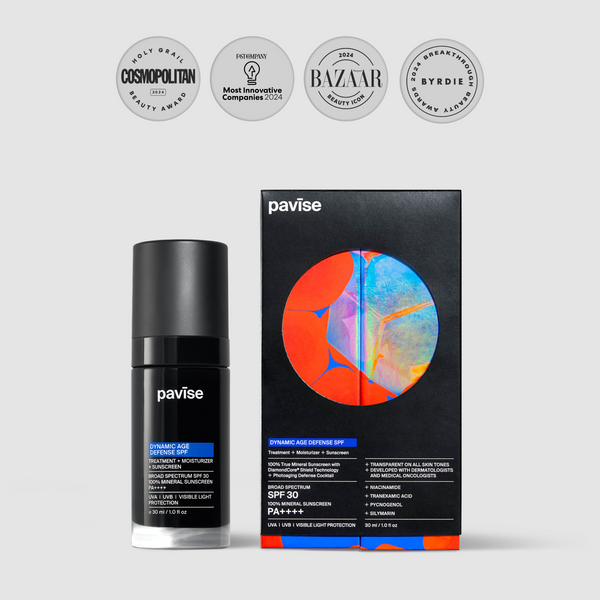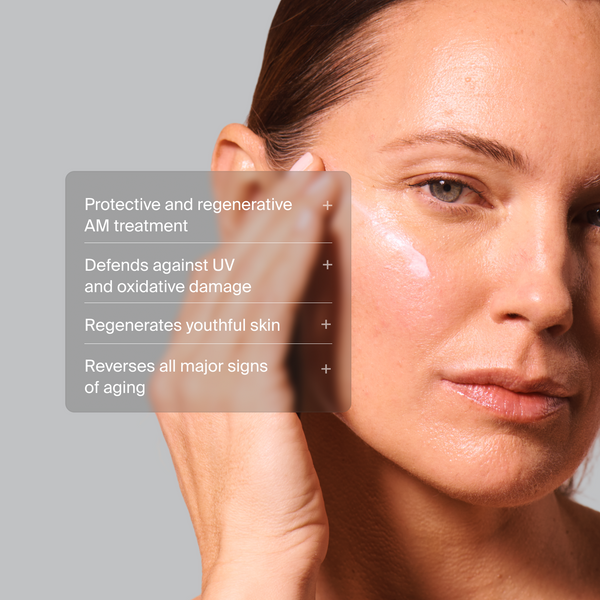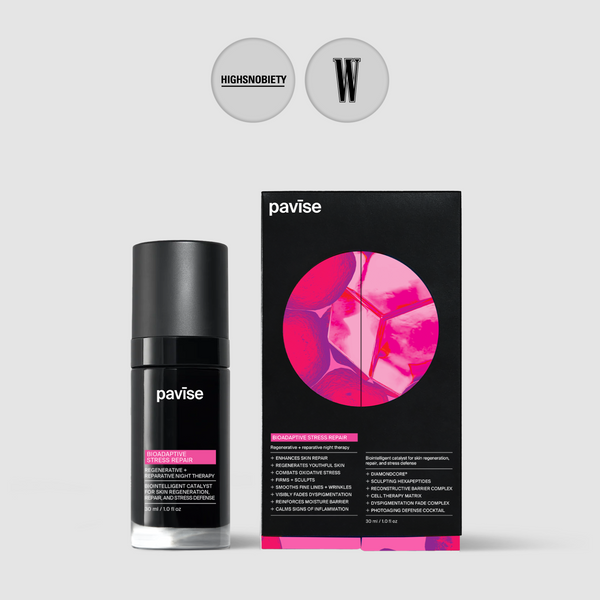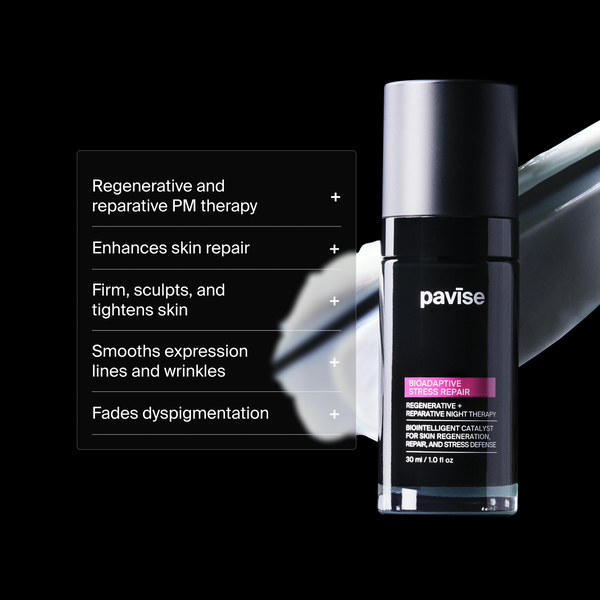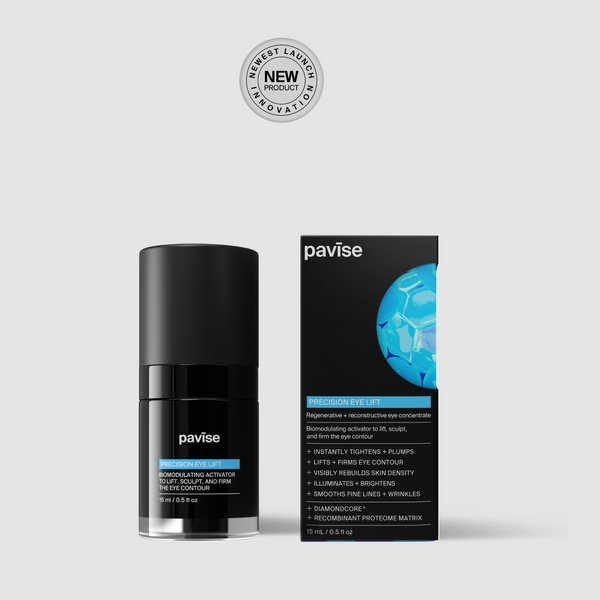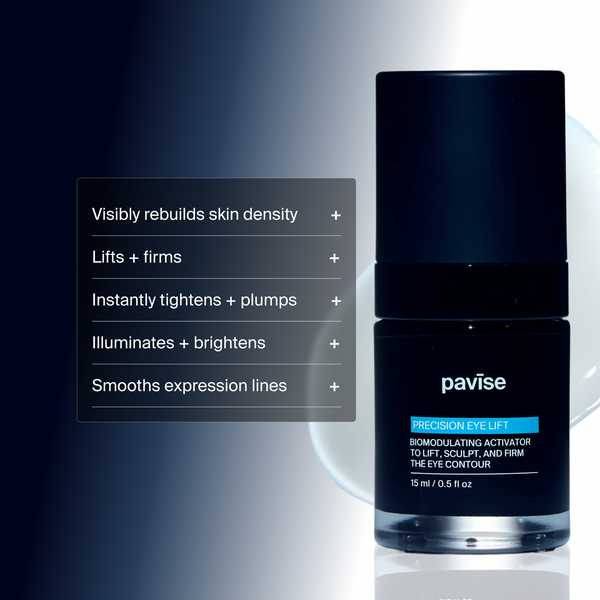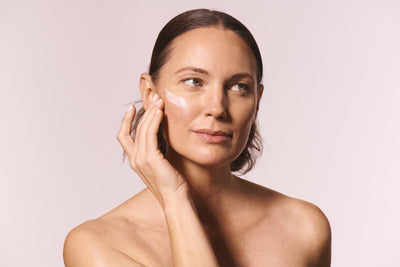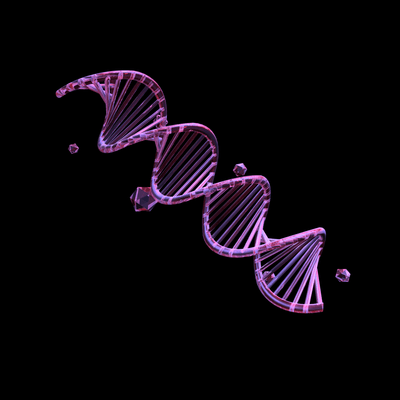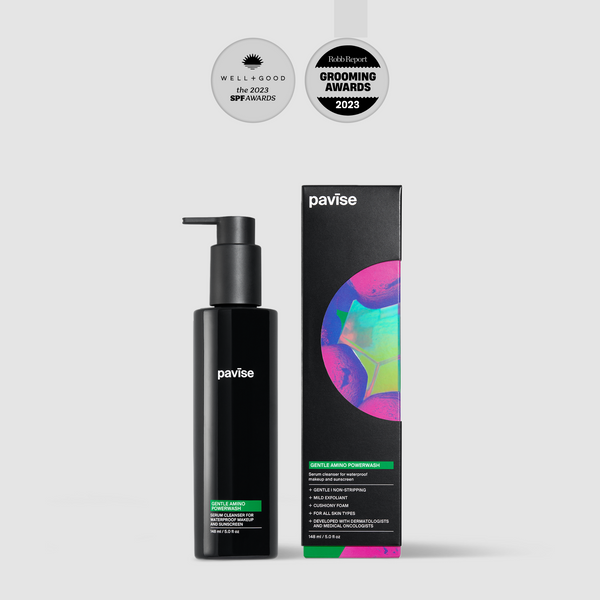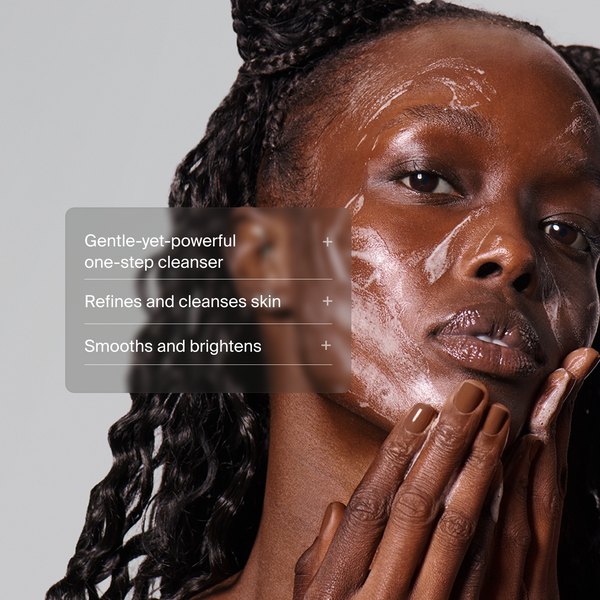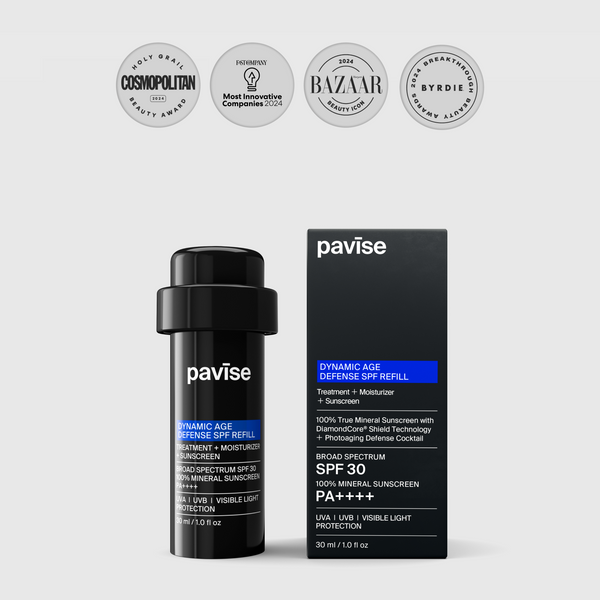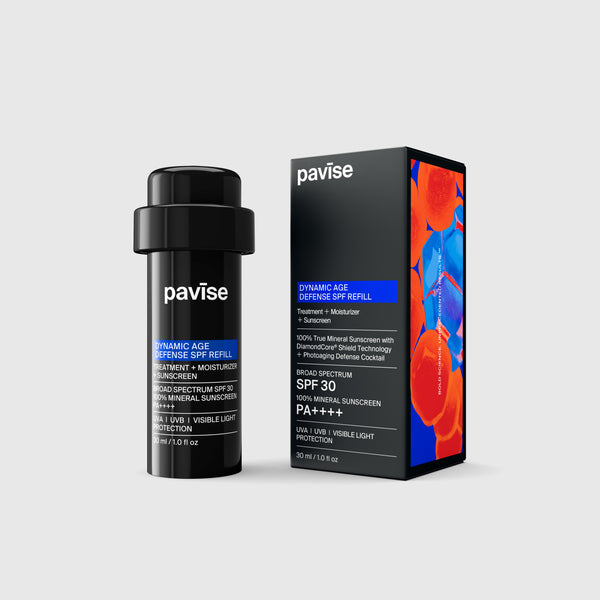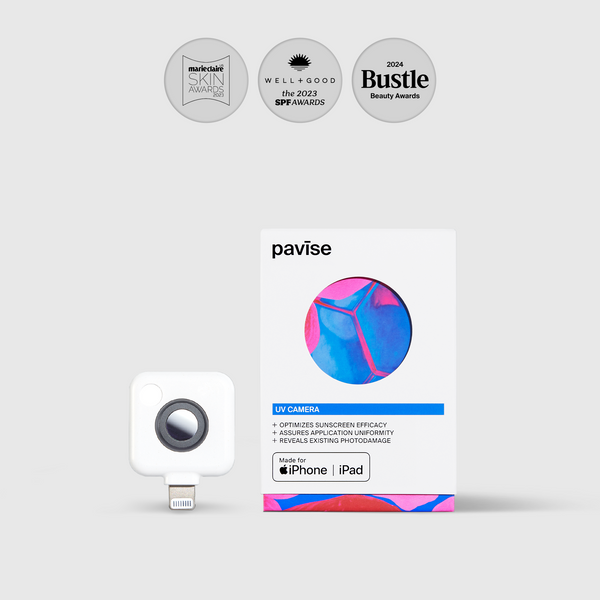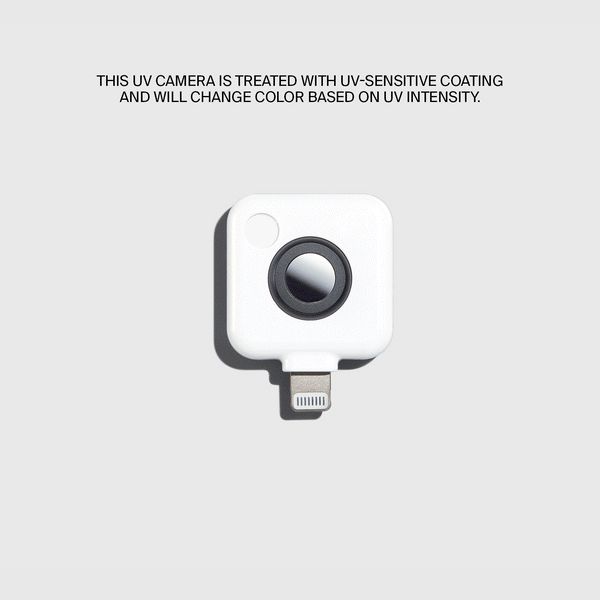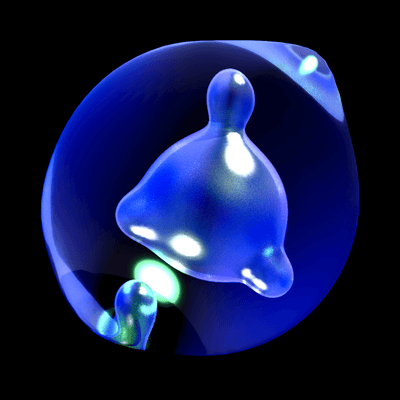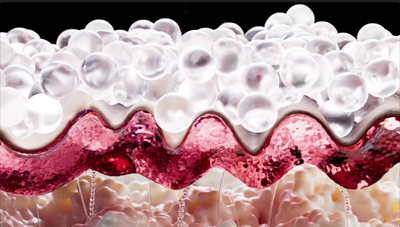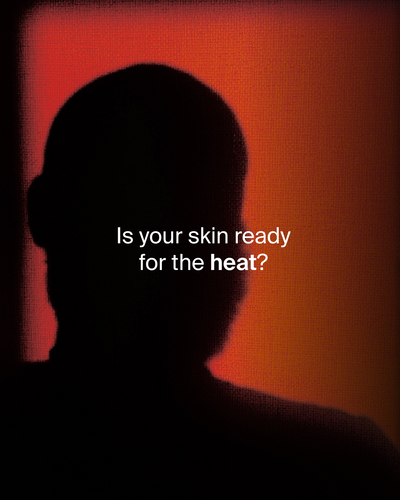THE GLP-1 EFFECT ON SKIN
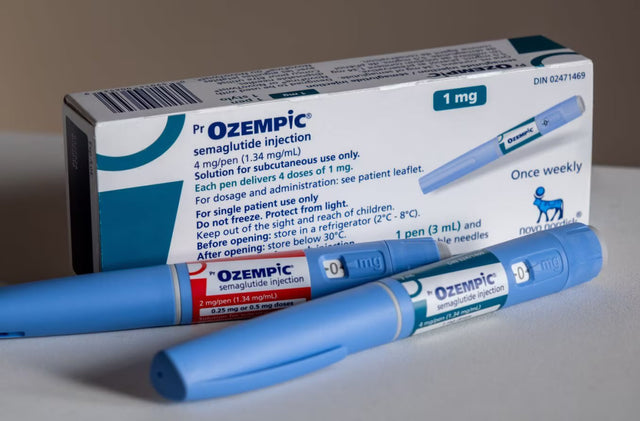
What you need to know
GLP-1 medications like Ozempic, originally developed for type 2 diabetes, have become widely used for weight loss due to their appetite-suppressing effects. However, rapid fat loss from these treatments can lead to visible skin changes often referred to as “Ozempic face,” including facial volume loss, increased wrinkles, and dryness. These effects aren’t caused by the medication itself, but by the speed of weight loss and potential nutrient deficiencies.
Understanding how GLP-1 affects appetite and metabolism helps explain these changes. Slowing weight loss, maintaining proper nutrition, and using skincare solutions like Pavise DiamondCore® can support collagen production, strengthen the skin barrier, and reduce signs of premature aging.
In recent years, glucagon-like peptide-1 (GLP-1) medications like Ozempic have taken center stage in the world of diabetes management and weight loss. Originally developed to help regulate blood sugar in people with type 2 diabetes, these treatments have quickly gained popularity for their powerful appetite-suppressing and fat-reducing effects, making them a go-to for those seeking quick, medically supported weight loss. But with their rise in use, a new conversation has emerged: the impact of these medications on the skin. Terms like “Ozempic face” have begun circulating online, highlighting the unintended cosmetic consequences that can come with rapid weight loss such as facial volume loss, increased wrinkling, and a dull, tired complexion.
In this article, we’ll break down what GLP-1 is, how these medications work, and most importantly, how you can protect your skin from the aging effects often associated with their use. Whether you’re currently on a GLP-1RA or simply exploring your options, understanding the connection between these treatments and skin health is essential for achieving your goals without sacrificing your glow.
What is GLP-1?
Naturally occurring GLP-1 is a peptide hormone heavily involved in the regulation of blood glucose levels1,2. Blood sugar levels are regulated by insulin as well as glucagon. Insulin is responsible for reducing blood sugar levels when there is a large amount of glucose present while glucagon increases blood sugar levels if needed. The role of GLP-1 is to either induce the release of insulin or suppress the secretion of glucagon in order to lower blood sugar levels after eating1,2. GLP-1 also has a large influence on pancreatic cell function by promoting proliferation to maintain their functionality. This further enhances insulin secretion to maintain blood sugar levels1.
In addition to blood glucose levels, GLP-1 also plays a role in controlling the body’s appetite. GLP-1 has receptors present in the gastrointestinal tract that control gastric emptying. When the receptors are activated, the gastric muscle contractions responsible for dispensing food from the stomach are reduced which extends food retention1. This allows for a longer feeling of fullness which reduces appetite. GLP-1 also has receptors present in regions of the brain. One specific region is the hypothalamus, a region responsible for controlling hunger sensations. When GLP-1 interacts with its receptors in the hypothalamus, it activates neurons that promote feelings of satiety after eating and inhibits other hunger inducing sensations as well1. GLP-1 plays a dual role in appetite regulation by both slowing gastric emptying in the gut and signaling satiety in the brain, making it a key hormone in maintaining energy balance and reducing food intake.
What is a GLP-1 receptor agonist and what are they used for?
Glucagon-like peptide-1 receptor agonists (GLP-1RAs) are drugs that are structurally modified to mimic the natural functionality of GLP-1, and they are designed with an extended half-life1. In other words, GLP-1RAs behave as GLP-1 would in the body, maintaining blood glucose levels and appetite, and they last longer as well. Natural GLP-1 does not actually last very long in the circulatory system. They are only present for about 1-2 minutes before they are broken down1. Extending half-life ensures more controlled blood glucose regulation and lower appetite.
These GLP-1 functions are ideal for diabetes and obesity treatment. The design of GLP-1RAs was originally intended for diabetes treatment, but treating for obesity has become increasingly common in recent years. The addition of an agonist improves the functionality of the pancreas and increases insulin production which is the treatment that type 2 diabetics require3. In terms of weight loss, GLP-1RAs delay gastric emptying and reduce appetite1. This treatment has proven to be very effective in treating diabetes, and it has proven to cause rapid weight loss, but many side effects come with the use of GLP-1RAs.
How does rapid weight loss affect skin aging?
With the use of GLP-1RAs becoming more common, the term “Ozempic face” is now being thrown around pretty commonly. What most people have not realized is that it is not the prescription itself causing this, but it is simply the rapid weight loss due to the use of medications such as Ozempic or Wegovy. When individuals undergo rapid weight loss in a short period of time, noticeable changes in their face appear due to the extreme fat loss. The notable features of this are reduced size in the lips, cheeks, and chin, and increased wrinkling due to a loss of collagen and elastin4. All of these take part in making the face appear gaunter and more aged in comparison to other people of the same age who have not experienced rapid weight changes.
In addition to hollowed cheeks and wrinkled skin, there is also more dryness and a lack of shine due to nutrient depletion4. When people are using GLP-1RAs, they have an extremely reduced appetite which can cause them to not have the proper nutritional intake that they need. This results in a weakened skin barrier which leads to more water loss4. These combined changes are what give rise to the term "Ozempic face," reflecting the visible consequences of rapid fat loss and nutritional deficiencies. Understanding the root causes behind these facial changes is essential for managing expectations and maintaining overall skin health during GLP-1RA treatment.
How can skin aging due to weight loss be treated?
There are many different solutions to prevent and reverse the aging caused by rapid weight loss with the first being to slow down the weight loss in the first place. If weight changes are more gradual, the skin has time to catch up and recover. This way, there will not be as much sagging or wrinkling because the skin is able to maintain its elasticity.
If this is not an option though, another solution is to maintain a balanced diet while taking care of the skin. Proper nutrition and hydration ensure that any aging symptoms caused by nutrient deficiencies or dehydration are prevented. To avoid wrinkling and sagging due to collagen and elastin degradation, the best solution is using antiaging products that promote collagen synthesis. Our preferred method is the Pavise DiamondCore® technology which has been proven to improve collagen synthesis and reverse signs of aging5. The ND-ZnO (nanodiamond zinc oxide) complex strengthens the skin barrier, increases collagen levels, and helps combat oxidative stress, making it especially valuable for skin recovering from structural loss and inflammation. It has been found that ND-ZnO increases epidermal thickness which both improves the skin barrier and increases skin elasticity5. By implementing a healthy diet and using preventative skincare, most skin aging symptoms can be treated and reduced.

As medications like Ozempic gain traction for their benefits in weight loss and diabetes management, it’s important to balance these effects with commitment to skin health. The phenomenon of “Ozempic face” isn’t caused by the drug itself, but rather by the rapid fat loss and nutritional deficiencies that can accompany its use. The good news? These effects can be managed and even reversed.
By understanding how these medications work, and how they affect the skin, you can take proactive steps to support your complexion during your wellness journey. Slowing weight loss when possible, maintaining a well-balanced diet, and incorporating proven anti-aging treatments like Pavise DiamondCore® can help preserve your skin’s elasticity, brightness, and youthful vitality. With the right tools and knowledge, it’s possible to reap the benefits of GLP-1 treatments without compromising your glow.
References
1. Zheng Z, Zong Y, Ma Y, et al. Glucagon-like peptide-1 receptor: mechanisms and advances in therapy. Signal Transduction and Targeted Therapy. 2024;9(1):1-29. doi:https://doi.org/10.1038/s41392-024-01931-z
2. Wang JY, Wang QW, Yang XY, et al. GLP−1 receptor agonists for the treatment of obesity: Role as a promising approach. Frontiers in Endocrinology. 2023;14(14):1085799. doi:https://doi.org/10.3389/fendo.2023.1085799
3. Collins L, Costello RA. Glucagon-like peptide-1 receptor agonists. PubMed. Published February 29, 2024. https://www.ncbi.nlm.nih.gov/books/NBK551568/
4. Giulia Daneshgaran, Orr Shauly, Gould DJ. “Ozempic Face” in Plastic Surgery: A Systematic Review of the Literature on GLP-1 Receptor Agonist Mediated Weight Loss and Analysis of Public Perceptions. Aesthetic Surgery Journal Open Forum. Published online June 10, 2025. doi:https://doi.org/10.1093/asjof/ojaf056
5. Zhang XD, Teng C, Bai X, et al. Enhanced skin regeneration and therapeutic delivery using novel diamond‐augmented zinc oxide. Journal of Cosmetic Dermatology. Published online July 31, 2024. doi:https://doi.org/10.1111/jocd.16508
By Elia Rodriguez - Updated September 24, 2025
